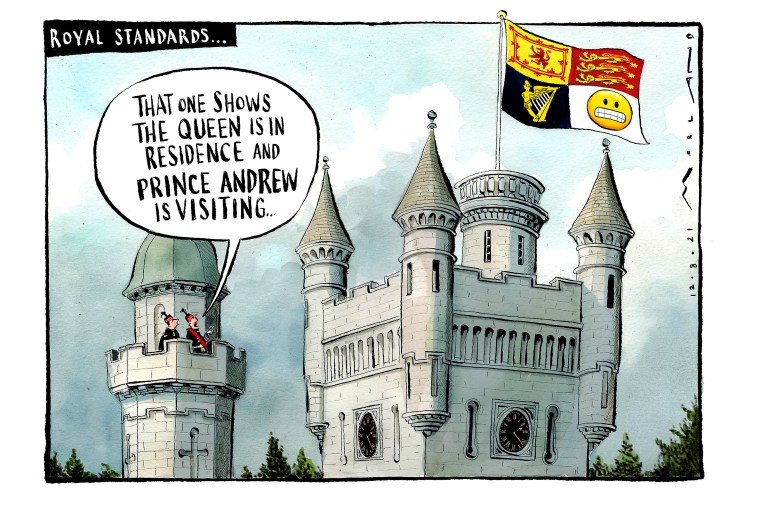monkfish
pfm Member
The UK is very far from an absolute monarchy. The beginning of the end was beheading of Charles 1 in 1649.
The beginning of the end was inviting the feckers back.
The UK is very far from an absolute monarchy. The beginning of the end was beheading of Charles 1 in 1649.
I wasn’t referring to the latest litigation.This is a civil litigation though if it goes ahead.
He could sit back and ignore it.
It isn’t a criminal case.I heard on R4 yesterday that both legal teams are talking about money rather than criminal punishment
It isn’t a criminal case.
The UK is very far from an absolute monarchy. The beginning of the end was beheading of Charles 1 in 1649.
Aye and what happened they executed Cromwell
No they didn't. Cromwell died of natural causes.
Well who was Bertie then? I also believe that the Duke of Edinburgh and Princess Margaret ( she is still among us) had Epstein strangled in his cell.Surely Andrew’s grandfather was George VI rather than Edward VII?
It was alleged they went upstairs and had felately.I lost count myself back there. Edward VII was Andrew's great-great grandfather. George VI was his grandfather, and George V was his great-grandfather. George V was famously boring. His hobbies were shooting grouse and stamp-collecting.

Well who was Bertie then? I also believe that the Duke of Edinburgh and Princess Margaret ( she is still among us) had Epstein strangled in his cell.
Bertie became Edward the Seventh, so pre-dates Nazism by a generation. But Edward the Eighth, he of Wallis Simpson infamy, was openly engaged with Nazis in the 1930s.Well who was Bertie then?.
Bertie became Edward the Seventh, so pre-dates Nazism by a generation. But Edward the Eighth, he of Wallis Simpson infamy, was openly engaged with Nazis in the 1930s.
Did he, aye?
Why were visual representations of Oliver Cromwell’s body so important?
The woodcut illustration (after p. 8) shows Oliver Cromwell’s effigy in ermine-trimmed robes, with a crown placed just above his head. These royal accessories were given to Cromwell posthumously: he had been offered them in life but had refused. Through association with the easily recognised and respected artefacts of royalty, the hereditary succession of Cromwell’s son Richard was legitimised. To this effect, Cromwell’s effigy was displayed at Somerset House and during the funeral procession through London, as well as depicted in images that were circulated to audiences further afield.
After the Restoration, positive visual representations of Oliver Cromwell kept the spectre of rebellion and republicanism alive. In a macabre demonstration of strength (and vengeance for his father’s death) King Charles II (1630–1685) ordered Cromwell’s body to be exhumed, tried, executed and exhibited before the citizens of London. The sight of Cromwell’s mutilated corpse was intended to counteract any lingering pro-Cromwellian sentiment in Britain.
So that told him! I guess nowadays we’d call it cancel culture.Cromwell was indeed tried and executed, but only after being exhumed.
From: https://www.bl.uk/collection-items/pamphlet-on-the-death-of-oliver-cromwell
George VI was also Bertie (Albert) - Edward VIII was David.Bertie became Edward the Seventh, so pre-dates Nazism by a generation. But Edward the Eighth, he of Wallis Simpson infamy, was openly engaged with Nazis in the 1930s.
